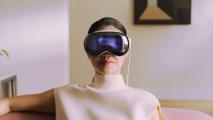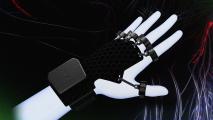“Wow. There’s the birds again! They’re flying!” says nine-year-old Imogen, sitting in her family’s living room in Hull, England. Then she gasps, “Daddy! That’s you!”
“Yes baby, I was there making it for you,” Craig Chaytor, her father, says as she turns her head to see the birds. But she’s not watching the birds outside her window — instead, she’s using a virtual reality headset to view a scene her dad had captured weeks earlier.
For Imogen, virtual reality is more than just a fun experience — it’s how she learns. Imogen has Williams’ Syndrome, a rare developmental disorder characterized by learning disabilities. By incorporating VR in her education, Craig says Imogen has seen tremendous improvement in her cognitive skills.
And Imogen isn’t the only one benefiting from using VR for education. Everyone from surgeons and doctors to Exxon and Walmart sees the benefit of being immersed in the world they want to learn. And the advantages of using virtual reality in education are now being confirmed through new research. Last year, scientists at the University of Maryland (UMD) conducted one of the first in-depth analyses of VR in education. The results showed an 8.8% improvement in recall accuracy for participants using VR headsets compared to the control group using desktop computers.
“This data is exciting in that it suggests that immersive environments could offer new pathways for improved outcomes in education and high-proficiency training,” Amitabh Varshney, professor of computer science and dean of the College of Computer, Mathematical, and Natural Sciences at UMD told the university.
Immersive environments could offer new pathways for improved outcomes in education.
For Imogen, VR helps keep her mind focused which is a struggle for people with Williams’ Syndrome. “She’s easily distracted. She could be watching one program, for example, or playing with a toy, and then she’ll instantly get bored of that and then she grabs something else,” Craig explains.
“From a learning perspective, she’s between four and five years old. But in reality, she’s nine years old.”
However, when Imogen tried watching a standard VR video, the experience was too overwhelming.
“I brought (a simple headset) home so I could play with it on my mobile phone. Then Imogen perked up, ‘well daddy, can I try?’ When she (put the headset on) anxiety kicked it. She didn’t like the fact that it was on her head. She didn’t like the loud noises. It was going too fast.”
Craig went on YouTube to see if there were any VR videos tailored to children with disabilities. At the time, he couldn’t find any — so he decided to create his own.
“I said to myself, ‘I wonder if I can create a world for Imogen to enjoy?’ That was the moment where I started teaching myself everything about virtual reality.”
In 2016, Craig — a chef by trade — started building his own set of VR videos with different educational themes. He started off with simple videos displaying ambient sounds and soothing colors. When he saw how much she enjoyed that experience, he progressed to underwater diving, space, and animals to help Imogen learn what was difficult for her to understand in a classroom setting. Since loud noises are stressful for Imogen, all of the videos incorporate calming music or sounds of nature to help Imogen relax and focus.
“I adapted it to where, as soon as she puts the headset on, we’re in a white room. What I learned was all children and people who have mental problems, they all relate to the color white because they see it as a central color. We always start off in the white room, and I slowly transition the white room into the image. It takes about ten to fifteen seconds. She is slowly seeing that world come at her.”
That world, Craig says, is often off-limits to her in “real” reality.
Since she began using VR, Imogen has seen noticeable improvements in her speech and memory. Before using VR she was only capable of saying a few simple words, not full sentences.
“She started changing,” Craig says with pride, “VR has helped her to remember vocabulary words we teach her and associate them with the pictures she sees on the screen.”
Her teachers invited Craig to show his videos to other kids with disabilities in her class. “I had a little boy who the teachers said that they had for six months, but he wouldn’t speak to anybody. When he put my headset on and started watching shows, he started singing ‘Twinkle, Twinkle, Little Star.’”
Craig says the teachers were astonished and actually in tears at what they were seeing in their students. So he founded Imagine Making Memories Everywhere (I.M.M.E.) — Imme is Imogen’s nickname — so he could make videos accessible to more kids. He created a book of adventures, where every page tells the story of an adventure that Craig went on to record the videos. The book includes fun facts and educational curriculum for the parent and child to engage. At the bottom of each page, there’s a QR code that, when scanned with a smartphone, turns the story into a virtual reality adventure. Craig hopes to be able to scale this project so that kids with disabilities outside of Hull can use virtual reality in their education.
If you’re interested in exploring other ways VR can help people with disabilities, check out Freethink’s documentary Using Virtual Reality to Help Kids with Autism.





